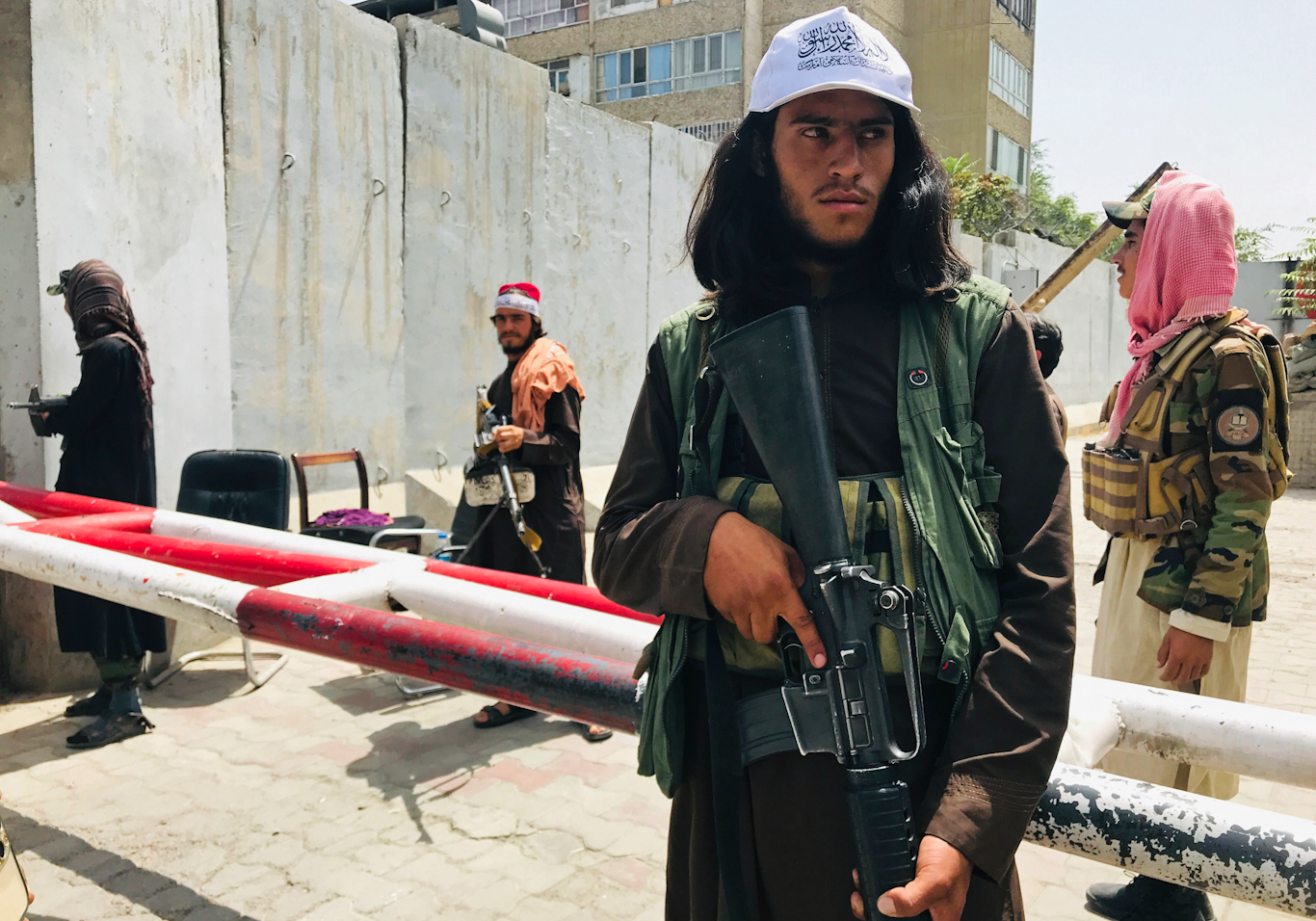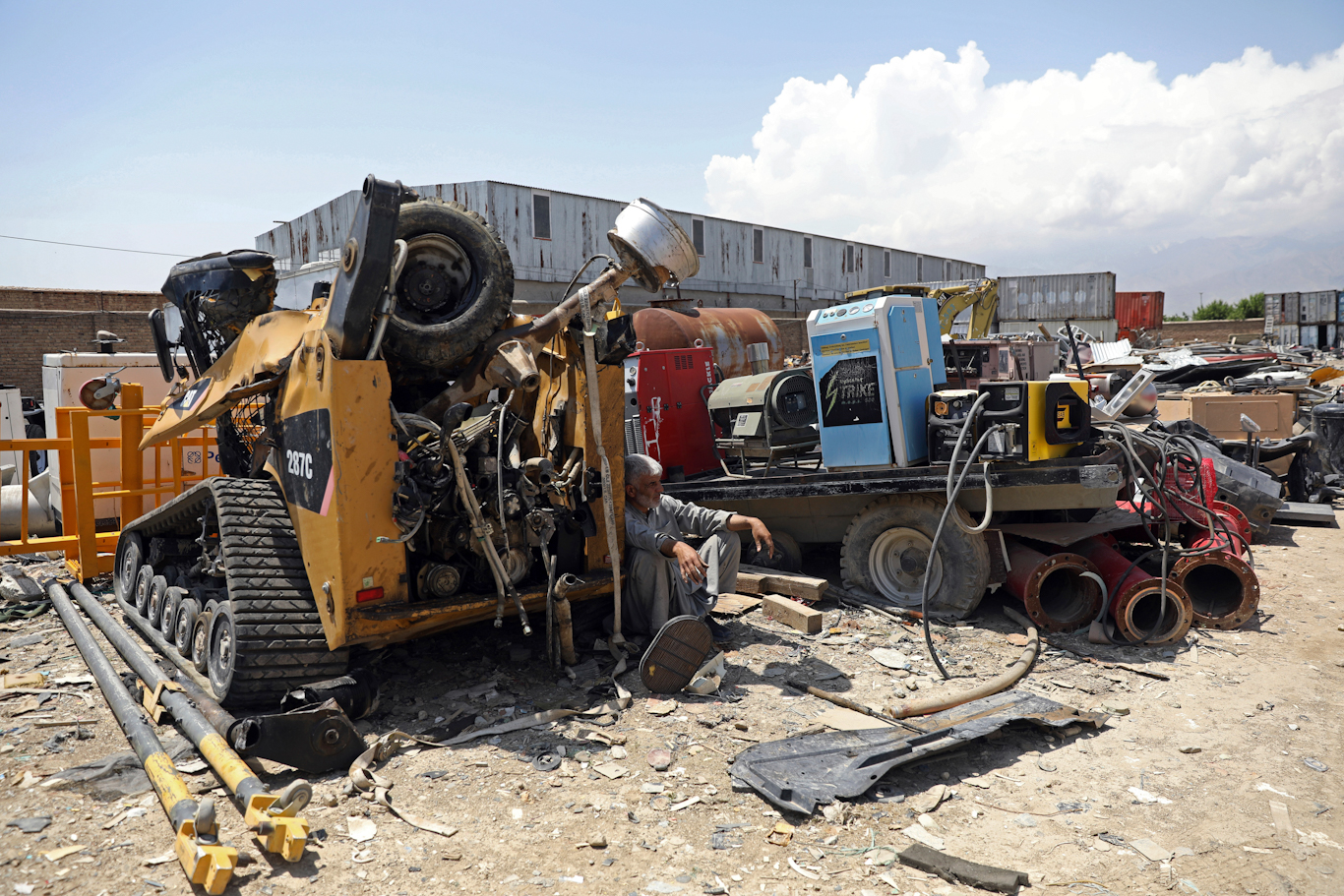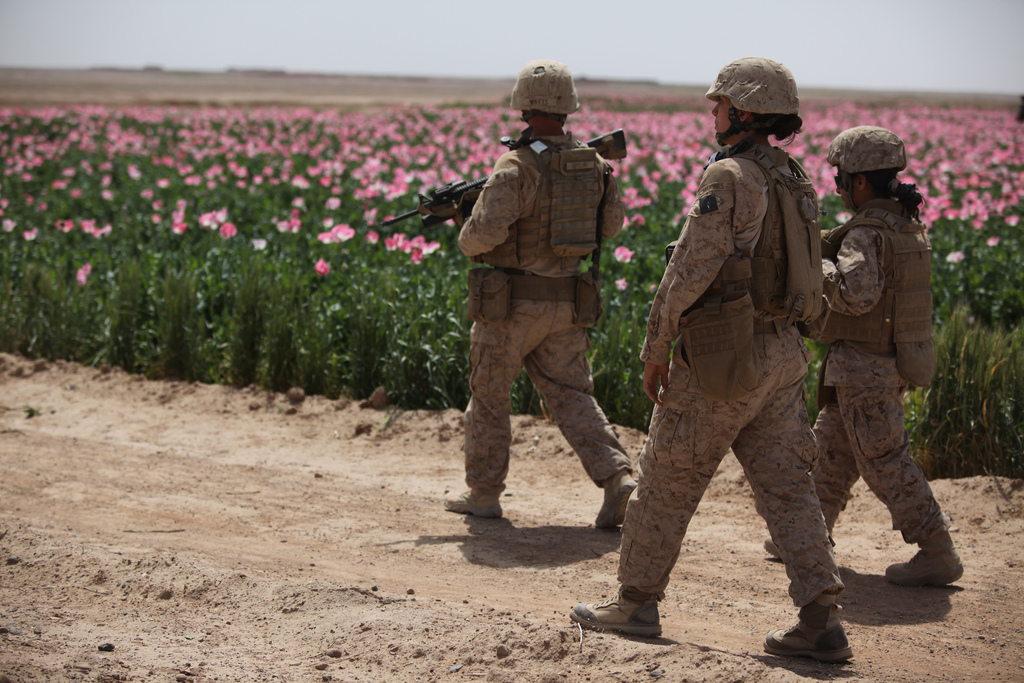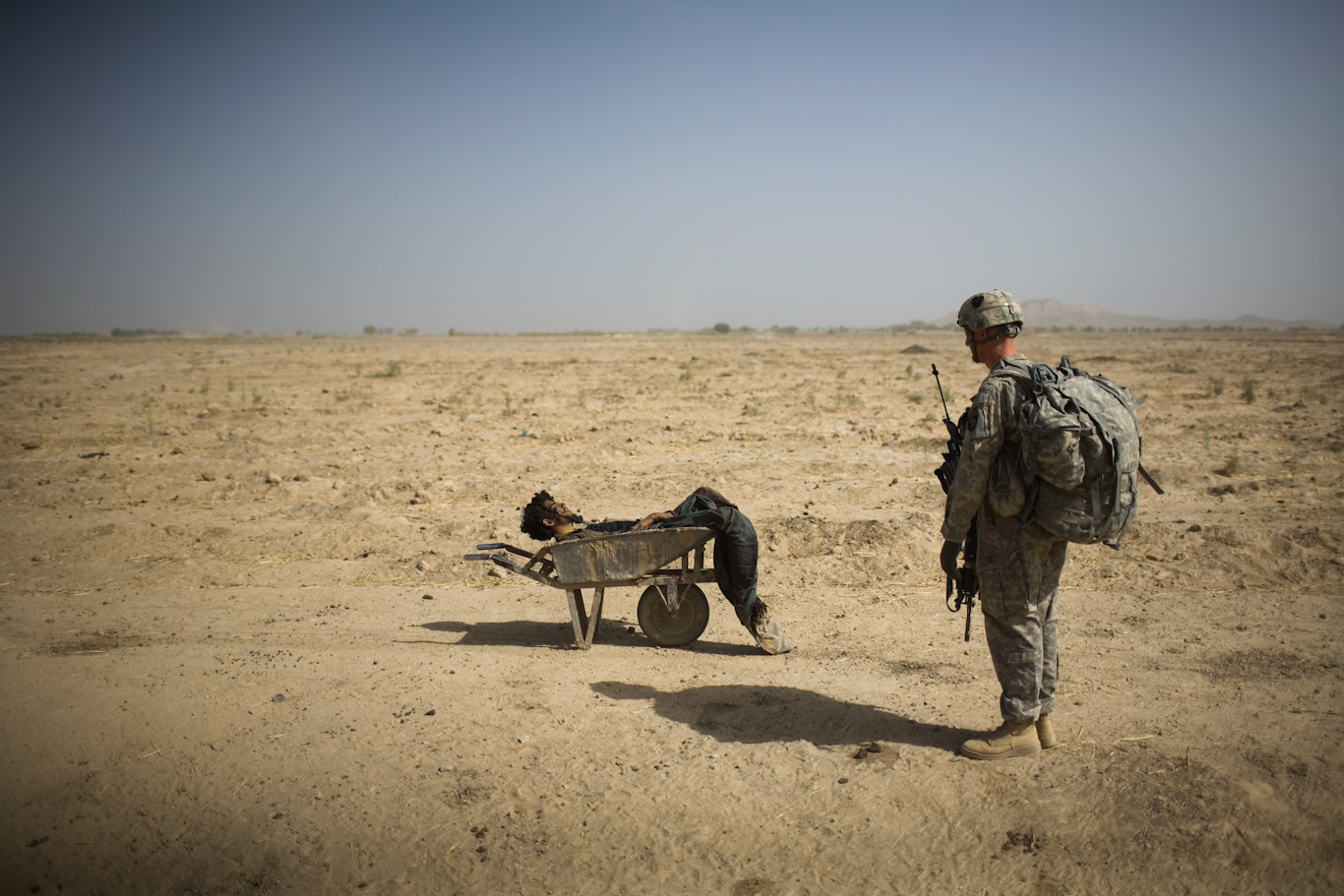“I Was Living Like Scarface”: The Ludicrous Costs of the War in Afghanistan Revealed in New Documents, Testimonies
“Holy cow, I was living like Scarface…I was paying out anywhere between $300-400,000 per week to $5 million per week at times. All in cash.” Matthew Hoh, U.S. Marine Corps Captain and former State Department official
by Alan Macleod
August 25th, 2021
WASHINGTON — The conflict in Afghanistan — for the U.S. at least — appears to be over. Essentially admitting defeat, American planes are beating a hasty and ignominious retreat from Kabul, with images of the withdrawal bearing a striking resemblance to those from the fall of Saigon 46 years previously.
As the Taliban complete their takeover, many Americans are wondering what it was all about. For what, and on what, did the United States spend more than $2 trillion? A newly published study from the Special Inspector General for Afghanistan Reconstruction (SIGAR) — a U.S. government body — lays bare the waste and corruption of the whole affair, drawing parallels with famous satires such as “Catch 22” and “M*A*S*H*.” Uncompromising in its frankness, the 124-page report outlines the incompetence, venality and dark absurdity of the whole endeavor. “When you look at how much we spent and what we got for it, it’s mind boggling,” one senior Department of Defense administrator admitted to SIGAR in 2015.
Congress founded SIGAR in 2008 to provide neutral and objective oversight into the U.S.’ handling of Afghan reconstruction programs. The new report is the latest — and perhaps most critical — of 13 yearly offerings analyzing U.S. efforts in the country.
Bad metrics
At no point did the U.S. truly control all of Afghanistan. But officials in Washington wanted to see quantifiable results. In a region where American troops were barely able to leave their bases without being attacked, “cash spent” became one of the few concrete metrics commanders could report back with any accuracy. As the report concluded:
Perversely, because it was the easiest thing to monitor, the amount of money spent by a program often became the most important measure of success. A USAID official told SIGAR, ‘The Hill was always asking, ‘Did you spend the money?’…I didn’t hear many questions about what the effects were.
Program budgets were massively expanded, often over the objections of USAID and others on the ground, who argued that inundating the country with dollars was not truly winning hearts and minds, and was a wasteful and ineffective strategy.
There was no incentive to report on financial excesses, fraud or abuse, and barely any oversight over where the money was actually going. Contractors, NGOs and others who were aboard the seemingly endless gravy train also kept quiet as they stuffed their pockets with billions of dollars of public money.
MintPress spoke to a person who had been a central part of this bizarre story. Matthew Hoh was a captain in the U.S. Marine Corps and an official with both the Department of Defense and the State Department, spending almost 12 years in Afghanistan and Iraq. In 2009, he resigned from his position in the State Department in Zabul Province, Afghanistan, over U.S. policy in the country. “The way to prove that you were doing your job was by spending money,” Hoh told MintPress, continuing:
Money being spent on an institutional level was a metric of success. Somehow in the minds of the U.S. political leaders, in Iraq and Afghanistan, dollars spent equated to things being constructed and effective counterinsurgency [against the Taliban]…But the Taliban themselves were taking the money! The Taliban guys were doing the construction work. It was absolutely nuts!”
Funding the enemy
By this time, the U.S. had effectively lost control of Afghanistan. One officer told Hoh that he controlled only the area “as far as my machine guns reach and the Taliban control everything else.” If that was the case, why didn’t the Taliban overrun any of the network of small U.S. bases throughout the country? One reason was that they were afraid of U.S. airpower. But an equally important factor, Hoh claimed, was that NATO outposts were handing out millions of dollars in cash to local firms and groups as part of their mission — enormous sums in a country where the majority live on less than $2 per day. “The Taliban were making a ton of money off these outposts,” Hoh exclaimed, “and everyone knew exactly where the money was going!”

Taliban fighters hold American weapons at a checkpoint previously manned by US troops in Kabul, Aug. 17, 2021. Photo | AP
While this might sound far-fetched to a lay person, the notion that the U.S. was directly paying off the Taliban has been an established fact for over a decade, the latest SIGAR report noting that Washington has been “buying” the insurgents’ cooperation, making the Taliban “unofficial subcontractors to the U.S. government.”
“We’re talking about a fountain of money that the Taliban were happy to take. Whether they took it directly or it was the Taliban commander’s cousin that was the contractor, it doesn’t matter. The absurdity of all this — and everyone knew it was going on!” Hoh exclaimed.
Flooding Afghanistan with cash
In an attempt to win hearts and minds, U.S. forces began spending vast sums of money on reconstruction and social projects. Yet the money spent was far more than Afghanistan could productively absorb and it continued to grow to the point where American agencies had no way of effectively disbursing and overseeing it. This cash-in-hand system also created widespread networks of corruption that sustained huge numbers of people, including many in Washington.
As the SIGAR study explained, the assumption underpinning the whole strategy was that ordinary Afghans were the source of the corruption and that increased spending would reduce the fraud over time. Only after years of this strategy did the U.S. realize it was the enormous cash injection itself that was causing the problems. But, “rather than revisit their assumptions when progress proved elusive, U.S. officials concluded that it would be better to power through the shortcut by adding even more money” — a decision that might lead some to question the officials’ motives.
Flooding the country with cash produced a myriad of unforeseen negative economic consequences, making some places resemble gold-rush towns. Such was the speed and ambition of reconstruction efforts in Helmand Province, for instance, that local teachers quit their jobs to become day laborers for better wages, leaving children in the lurch.

A man rests in the shade of destroyed machinery sold by the US military to a scrapyard, outside Bagram Air Base. Rahmat Gul | AP
Hoh, who had been sent to Iraq to perform essentially the same function, had never seen anything like it. “Holy cow, I was living like Scarface… I was paying out anywhere between $300-400,000 per week to $5 million per week at times. All in cash,” he said.
I had $50 million in cash. The most I ever had at one point was $24 million on hand, in $100 bills, sitting in safes in my bedroom. And there was hardly any oversight whatsoever. Once we signed that money out of the vault in Baghdad, it was up to me how to document that money was spent and where the money went…I had no requirement. Literally. I am not joking. No guidance and no requirement to provide documentation about where that money went.”
No oversight
Because U.S. forces could not travel freely in Afghanistan, rarely venturing far beyond their bases, they were largely forced to take Afghan contractors at their word. This resulted in corner-cutting and shoddy workmanship becoming the norm, as Afghans had no incentive to produce quality work. SIGAR noted one particularly embarrassing instance where the U.S. paid $2.4 million for a new compound that it could never use, as it was built outside the security perimeter of the base for which it was commissioned.
Making money off American ignorance became a relatively sophisticated operation, with one Kandahar-based organization even providing contractors with doctored images of fake projects, replete with fraudulent geotags embedded in the digital photographs, helping local businesses swindle USAID. As former Ambassador to Afghanistan Ryan Crocker told SIGAR, “The ultimate point of failure for our efforts wasn’t an insurgency. It was the weight of endemic corruption.”
Poppy fiasco
The heroin trade exploded under the U.S. watch. In 2001 — the year of the invasion — Afghanistan produced just 185 tons of the drug. However, that number ballooned to over 9,000 tons by 2017, according to the United Nations Office on Drugs and Crime. The boom turned Afghanistan into the world’s first true narco-state, according to Professor Alfred McCoy, authorof “The Politics of Heroin: CIA Complicity in the Global Drug Trade.”
The trade implicated almost everybody in power, including Afghan President Hamid Karzai’s brother Ahmed Wali, among the biggest and most notorious drug kingpins in the south of the country.
Attempts to crush opium production often backfired comically. Local farmers were given cash not to plant poppies. But frequently, they would simply take the money and plant the crop elsewhere, unbeknownst to the Americans. Thus, they were simultaneously getting paid to plant and paid not to plant.

US Marines conduct a patrol alongside a poppy field in Boldak, Afghanistan on April 5, 2010. Photo | DoD
The U.S. also often paid huge sums of money to Afghan warlords to destroy poppy fields. However, local bosses — who grew the crop themselves — would simply destroy their rivals’ fields and collect the money, leaving themselves both enriched and in a dominant position to further control the trade in their area.
One notable example of this is local strongman Gul Agha Sherzai, who eradicated his competitors’ crops in Nangarhar Province (while quietly leaving his own in Kandahar Province untouched). But all the U.S. saw was a local politician seemingly committed to stamping out the illegal drug trade. They therefore showered him with money and other privileges. “We literally gave the guy $10 million in cash for rubbing out his competition,” Hoh said. “If you were going to write a movie about this, they’d say ‘This is too far fetched. No one is going to believe this. Nothing is this insane or stupid.’ But that is the way it is.”
At war with the truth
Truth, the ancient Greek playwright Aeschylus noted, is always the first casualty in war. And Afghanistan is a prime example of this phenomenon. The release of the Afghanistan Papers in 2019 showed that there had been a years-long drive to deliberately deceive the public about the conflict, with officials consistently sharing over-optimistic figures and assessments they knew to be untrue, all in an effort to keep the occupation going.
The SIGAR report details how “[e]normous pressure to demonstrate progress to the Congress and the American and Afghan people distorted accountability systems into spin machines,” condemning the “utterly dishonest” handling of the war, and concluding that “[t]here was little appetite for honest assessments of what worked and what did not.” “The American people have been lied to,” concluded John Sopko, the special inspector general at SIGAR.
Has the U.S. made things better?
Images of desperate people fleeing the Taliban’s seemingly unstoppable advance have flooded Western TV networks and social media news feeds, with well-paid pundits hand-wringing about how such a retreat must never happen again, that we are abandoning our allies, and how all our good work across the country will quickly be undone.
However, it is important to soberly assess the condition Afghanistan is being left in. While things were far from fine before the U.S.-led invasion, polls conducted by American organizations show Afghanistan to be the saddest place on earth. Zero percent of respondents claimed that they are “thriving” as opposed to 85 percent who said they were “suffering,” when asked by Gallup in 2019. And while war has been good business for some, President Ashraf Ghani — who fled the country as soon as the American troops left — recently admitted that 90% of the population was living on less than $2 per day.

A US soldier looks at the body of a suspected Taliban fighter killed in a coalition missile strike in Kandahar, Oct. 10, 2010. Rodrigo Abd | AP
On the Afghanistan Papers, MintPress News contributor and founder of anti-war group CODEPINK Medea Benjamin wrote:
The debacle in Afghanistan is only one case in a fundamentally flawed U.S. policy with worldwide consequences. New quasi-governments installed by U.S. ‘regime change’ in country after country have proven more corrupt, less legitimate and less able to control their nation’s territory than the ones the U.S. has destroyed.
Before the rise of the Taliban (who, incidentally, derived much of their power from U.S. money and arms flowing to the anti-Soviet Mujahideen), half of Afghan university students were women, as were 40% of the country’s doctors, 70% of its teachers and 30% of its civil servants.
For all the talk of the advancement in women’s rights and education in the country, today, in half of Afghanistan’s provinces, fewer than 20% of teachers are female (and in many, that number is less than 10%). Only 37% of girls can even read (as opposed to 66% of boys), according to Human Rights Watch.
Fear of personal safety in the country has increased virtually every year in Afghanistan since 2005, reaching all-time highs today. Hundreds of thousands of people have lost their lives and 5.9 million people have fled their homes. In 2018 alone, Afghans submitted 1.17 million complaints to the International Criminal Court, detailing accounts of atrocities from all groups, including U.S. forces.
Killing and making a killing
Thus, it is painfully clear that there are many losers in this conflict. But there were also clear winners. Even losing wars make money, and much of that money went to private or semi-private companies that populate the suburbs of Washington, D.C.
Hoh stated that there was corruption and stealing among American officials as well as Afghan. Deals were not documented, often completed upon a handshake alone, and there is often no paper trail to explain where all this money went. “But a lot of this was just legal,” he said, noting that 40% of the “aid” money earmarked for Iraq and Afghanistan never even left the United States, going towards management and consultancy fees for the prime contractor.
One of these groups is Creative Associates International, a for-profit NGO that received $449 million worth of contracts in Afghanistan, including one to rebuild the country’s education system around a privatized model. Creative Associates redesigned the Afghan curriculum, purging any mention of the past few decades of the country’s history (including the Taliban) from textbooks. “You can’t buy that kind of thought control — unless you have a few hundred million,” wrote one American educator.
Weapons companies have also made a killing supplying the U.S. and its allies with the arms necessary to sustain a 20-year campaign. As Jon Schwarz of The Intercept noted, defense stocks have outperformed the market by 58% over the past two decades. A prime example of this is Lockheed Martin. $10,000 of that company’s stock bought in September 2001 would now be worth more than $133,000. Lockheed Martin itself today receives more in federal contracts than all weapons manufacturers put together did 20 years ago.
Hoh sardonically noted that “the one place that reconstruction was successful was in Northern Virginia.” The rest of America might be struggling, but Raytheon Acres is flourishing.
Why we fight
In the wake of the 9/11 attacks, the United States and its allies originally entered Afghanistan to capture Osama Bin Laden, for whom the Taliban were said to have previously provided sanctuary. Underreported at the time was that the Taliban offered to hand him over to a third country if the U.S. would provide evidence connecting him to the terrorist attacks.
The U.S.’ mission slowly changed from stamping out al-Qaeda to opposing the Taliban, to the point that, when Bin Laden was killed in 2011 (in Pakistan), there was little talk of pulling the U.S. out of Afghanistan. Highlighting the phenomenon of mission creep is the fact that in the first draft of the U.S.’ 2009 military strategy for Afghanistan document, there is no mention of al-Qaeda, because NATO believed the group was “no longer a problem.”
While President Joe Biden has been praised and condemned in equal measure for his decision to remove troops from the country, he was at pains to make clear that this was not a renunciation of violence, saying:
Today a terrorist threat has metastasized well beyond Afghanistan. Al-Shabab in Somalia, al-Qaeda in the Arabian Peninsula, al-Nusra in Syria, ISIS attempting to create a caliphate in Syria and Iraq and establishing affiliates in multiple countries in Africa and Asia. These threats warrant our attention and our resources.”
“We’ve developed counterterrorism over-the-horizon capability that will allow us to keep our eyes firmly fixed on the direct threats to the United States in the region, and act quickly and decisively if needed,” he added.
Therefore, it is clear that the White House has not learned the lessons that anti-war activists hoped they had. With Washington also increasingly setting its sights on China and Russia, the exorbitant costs in Afghanistan might seem cheap in comparison to any future wars dwarfing this one in scale.
Feature photo | An Afghanistan National Army soldier, left, smokes as a U.S. Army soldier from Charlie Company, sits next to him in Camp Khogyani, Aug. 5, 2015. Massoud Hossaini | AP
Alan MacLeod is Senior Staff Writer for MintPress News. After completing his PhD in 2017 he published two books: Bad News From Venezuela: Twenty Years of Fake News and Misreporting and Propaganda in the Information Age: Still Manufacturing Consent, as well as a number of academic articles. He has also contributed to FAIR.org, The Guardian, Salon, The Grayzone, Jacobin Magazine, and Common Dreams.



Geen opmerkingen:
Een reactie posten